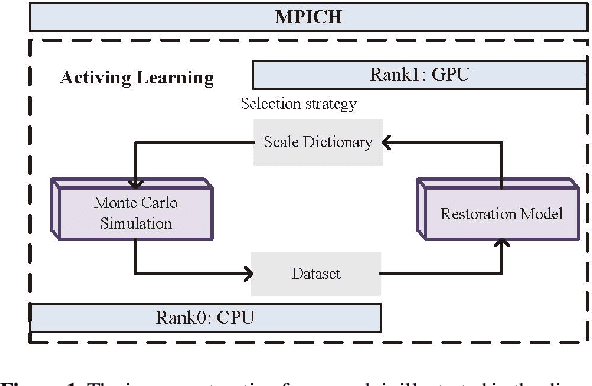Runyu Ning
An Image Quality Evaluation and Masking Algorithm Based On Pre-trained Deep Neural Networks
May 06, 2024Abstract:With the growing amount of astronomical data, there is an increasing need for automated data processing pipelines, which can extract scientific information from observation data without human interventions. A critical aspect of these pipelines is the image quality evaluation and masking algorithm, which evaluates image qualities based on various factors such as cloud coverage, sky brightness, scattering light from the optical system, point spread function size and shape, and read-out noise. Occasionally, the algorithm requires masking of areas severely affected by noise. However, the algorithm often necessitates significant human interventions, reducing data processing efficiency. In this study, we present a deep learning based image quality evaluation algorithm that uses an autoencoder to learn features of high quality astronomical images. The trained autoencoder enables automatic evaluation of image quality and masking of noise affected areas. We have evaluated the performance of our algorithm using two test cases: images with point spread functions of varying full width half magnitude, and images with complex backgrounds. In the first scenario, our algorithm could effectively identify variations of the point spread functions, which can provide valuable reference information for photometry. In the second scenario, our method could successfully mask regions affected by complex regions, which could significantly increase the photometry accuracy. Our algorithm can be employed to automatically evaluate image quality obtained by different sky surveying projects, further increasing the speed and robustness of data processing pipelines.
Image Restoration with Point Spread Function Regularization and Active Learning
Oct 31, 2023



Abstract:Large-scale astronomical surveys can capture numerous images of celestial objects, including galaxies and nebulae. Analysing and processing these images can reveal intricate internal structures of these objects, allowing researchers to conduct comprehensive studies on their morphology, evolution, and physical properties. However, varying noise levels and point spread functions can hamper the accuracy and efficiency of information extraction from these images. To mitigate these effects, we propose a novel image restoration algorithm that connects a deep learning-based restoration algorithm with a high-fidelity telescope simulator. During the training stage, the simulator generates images with different levels of blur and noise to train the neural network based on the quality of restored images. After training, the neural network can directly restore images obtained by the telescope, as represented by the simulator. We have tested the algorithm using real and simulated observation data and have found that it effectively enhances fine structures in blurry images and increases the quality of observation images. This algorithm can be applied to large-scale sky survey data, such as data obtained by LSST, Euclid, and CSST, to further improve the accuracy and efficiency of information extraction, promoting advances in the field of astronomical research.
Detection of Strongly Lensed Arcs in Galaxy Clusters with Transformers
Nov 11, 2022Abstract:Strong lensing in galaxy clusters probes properties of dense cores of dark matter halos in mass, studies the distant universe at flux levels and spatial resolutions otherwise unavailable, and constrains cosmological models independently. The next-generation large scale sky imaging surveys are expected to discover thousands of cluster-scale strong lenses, which would lead to unprecedented opportunities for applying cluster-scale strong lenses to solve astrophysical and cosmological problems. However, the large dataset challenges astronomers to identify and extract strong lensing signals, particularly strongly lensed arcs, because of their complexity and variety. Hence, we propose a framework to detect cluster-scale strongly lensed arcs, which contains a transformer-based detection algorithm and an image simulation algorithm. We embed prior information of strongly lensed arcs at cluster-scale into the training data through simulation and then train the detection algorithm with simulated images. We use the trained transformer to detect strongly lensed arcs from simulated and real data. Results show that our approach could achieve 99.63 % accuracy rate, 90.32 % recall rate, 85.37 % precision rate and 0.23 % false positive rate in detection of strongly lensed arcs from simulated images and could detect almost all strongly lensed arcs in real observation images. Besides, with an interpretation method, we have shown that our method could identify important information embedded in simulated data. Next step, to test the reliability and usability of our approach, we will apply it to available observations (e.g., DESI Legacy Imaging Surveys) and simulated data of upcoming large-scale sky surveys, such as the Euclid and the CSST.
 Add to Chrome
Add to Chrome Add to Firefox
Add to Firefox Add to Edge
Add to Edge